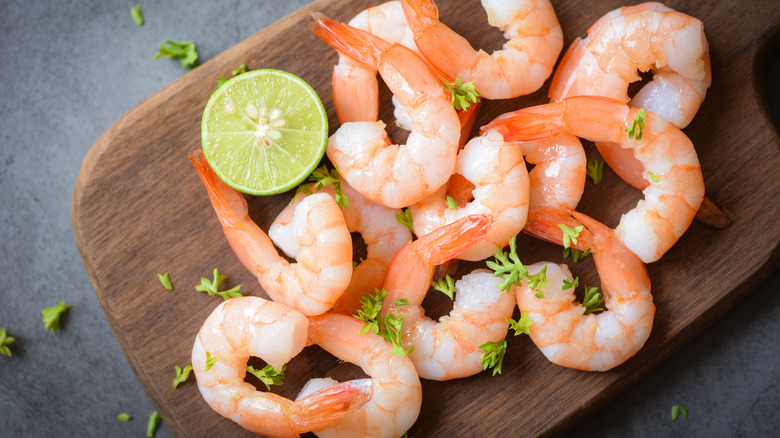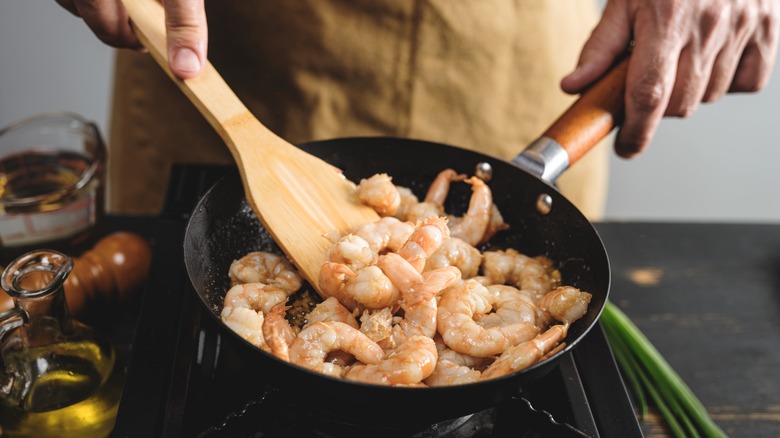The Unique Searing Method For Perfectly Cooked Shrimp
If you've ever cooked a piece of seafood on your stovetop, you're more than likely all too familiar with that sinking feeling in your stomach when you flip the spatula and half the piece of protein stays stuck to the pan. All the beautiful work you've spent getting the perfect sear is out the window, along with any hopes of a pretty presentation on the plate. Not to mention the elbow grease you'll need to scrub the pan later.
There's a thin line between tender, yet firm, and outright rubbery when it comes to the texture of cooked shrimp. Those little raw gray guys are apt to turn a blushy pink and fast. You see, shrimp are high in protein but low in fat. Fat forms a barrier that prevents sticking (via The Washington Post). It fills in any divots in the pan and offers a slick surface. One option is to add more fat to thickly coat the pan. However, there's another trick for perfectly seared shrimp that goes in a direction you might not expect.
Cold shrimp, cold pan
Similar to rendering duck fat or cooking bacon on the stove, the key to cooking shrimp is to start with a cold pan. Protein-rich foods are inclined to stick to any metal surface, thanks to chemistry and the chemical bonds between the two materials. When you add a protein to a hot pan, it immediately wants to bind with the metal (via the Royal Society of Chemistry).
Much like how you freeze and tense up when jumping into a cold swimming pool, a cold piece of meat will seize up when added to a screaming-hot pan (via Edible Times). That idea also applies to shrimp protein. Adding cold to cold and slowly bringing the temperature up of the two together is much less shocking to the protein. Cook's Illustrated points out that the shrimp are less likely to overcook and turn out rubbery. They will also cook, and brown, evenly as the pan and protein gently heat up in tandem.

